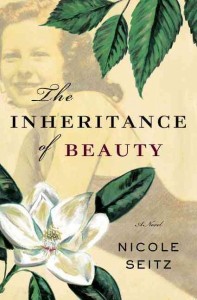 Laura Hillenbrand’s new book Unbroken is a catalog of human achievement and suffering. It is hard, almost impossible, to imagine one person undergoing so many trials and emerging from them with even the remotest possibility of recovery. Yet Hillenbrand’s central character, Louis Zamperini, rises phoenix-like from the worst that one man can do to another to find a measure of peace.
Laura Hillenbrand’s new book Unbroken is a catalog of human achievement and suffering. It is hard, almost impossible, to imagine one person undergoing so many trials and emerging from them with even the remotest possibility of recovery. Yet Hillenbrand’s central character, Louis Zamperini, rises phoenix-like from the worst that one man can do to another to find a measure of peace.
Hillenbrand is famous for Seabiscuit, the bazillion-selling story of an underdog horse who became a champion thoroughbred. Set in the depths of Depression-era America, it captured both the excitement and cultural impact of horse-racing, and the qualities of resilience that enabled the human and equine team to reach astonishing heights. Unbroken focuses on the same time period – the 1920s through the 1940s – and deals with the same setting – sports – but from there the two stories diverge completely.
Louis Zamperini was a no-good kid who fought and stole his way through his hometown of Torrance, California, and was probably headed for prison. His older brother managed to channel Louis’ energies into running, and the outlet proved spectacularly successful. Within a short time, Louis was setting records in NCAA track events, and got an invitation to try out for the 1936 Olympics in an event he’d only competed in four times. His stunning win sent him to Berlin, and an eventual meeting with Adolf Hitler.
When World War II started, Louis joined the Army Air Corps, and was assigned to the B-24 Liberator, a notoriously dangerous heavy bomber which nonetheless served in every theater of the war. After a number of successful missions, Louis’ plane crashed at sea. He and two other men survived, spending the next 47 days adrift in an inflatable raft, battling sharks, thirst, starvation, and wounds. They were even machine-gunned by a Japanese seaplane, which riddled the raft but miraculously didn’t touch any of the men. The third man died just before the raft landed on a Japanese-occupied island.
It was there that Louis’ life went from torment to living hell. After a short period on the island, he was shipped to the Japanese mainland and held in a secret concentration camp without access to even the nominal protection that the International Red Cross afforded prisoners. He was assaulted by civilians, and beaten, starved, and tortured by Japanese guards who would go on to be listed as war criminals. But he also encountered the rare guards who took chances to give prisoners some tiny measure of hope. For more than two years, he willed himself to live, and when Japan surrendered, he was finally free. That is, his body was free.
Louis suffered from what is now recognized as Post-Traumatic Stress Disorder, with its attendant symptoms: alcoholism, bursts of rage, alienation from loved ones, and an inability to cope with the routines of daily life. Heralded as a hero, Louis’ public face was a mask that hid a man still suffering the torments of the war. An encounter with evangelist Billy Graham convinced him to seek redemption and salvation, and in the years since, he’s exemplified those values, going so far as to meet with his torturers and captors and forgiving them.
As powerful as the book is, it also has its moments of humor – Louis gets caught trying to steal the Nazi flag from the Reich Chancellery, stockpiles homemade liquor, and joins other prisoners of war in playing clever but risky tricks on their captors. As much as those episodes help lighten the narrative, though, it is difficult not to become angry towards the Japanese whose treatment of the prisoners was nothing short of barbaric. Reaching the moment when Louis, and many of his fellow Americans, were able to achieve peace by forgiving the Japanese gave me a tiny taste of the redemption Louis achieved.
Hillenbrand concentrates on Louis’ story, although he survived his raft trip with another man who also lived as a prisoner until the end of the war. Other men were brutalized, even murdered, in the camps. But Louis’ indomitable will is memorable and inspirational. It truly was unbroken.
Check the WRL Catalog for Unbroken

Read Full Post »














 Do you want your picture taken? Grab a digital camera and you’ll have it in an instant. But just a mere one hundred years ago, a photograph was a treasured object. Having your picture taken meant a trip to the photographer’s studio and spending considerable money. Today’s story is about a portrait photographer, his studio and his assistant in Winona, Minnesota in 1907.
Do you want your picture taken? Grab a digital camera and you’ll have it in an instant. But just a mere one hundred years ago, a photograph was a treasured object. Having your picture taken meant a trip to the photographer’s studio and spending considerable money. Today’s story is about a portrait photographer, his studio and his assistant in Winona, Minnesota in 1907.




